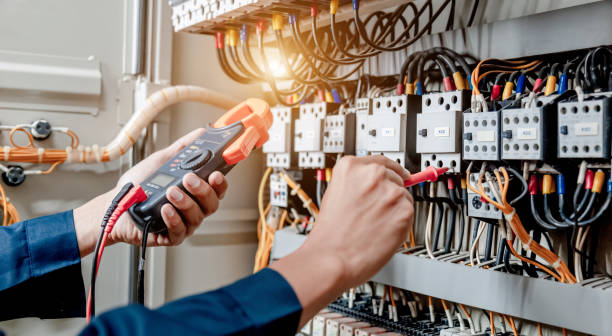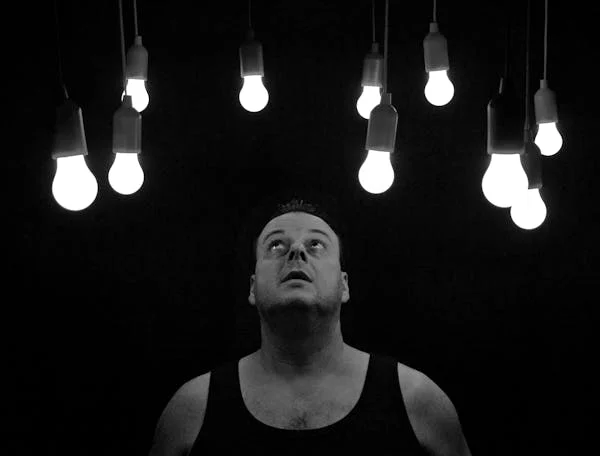A light circuit is a fundamental electrical system that allows us to illuminate our homes, workplaces, and public spaces. Understanding How does a simple light circuit work? is not just intriguing but also essential for safe and efficient electrical use. Let’s dive into the captivating world of light circuits, exploring their historical significance and practical applications.

What is a light circuit?
A light circuit is a closed loop of conducting wires through which electricity flows, powering a light bulb and emitting light. It consists of components such as a power source, conductive wires, and a light bulb – all working together seamlessly to illuminate our surroundings.
Importance of understanding light circuits
Having a grasp of light circuit basics enables us to troubleshoot common problems, make informed decisions when upgrading lighting fixtures, and create energy-efficient solutions. By delving into the intricacies of light circuits, we empower ourselves to navigate the world of electrical systems confidently.
Historical background of light circuits
The development of light circuits dates back to the 19th century when pioneers like Thomas Edison and Nikola Tesla revolutionized the way we harness electricity. Their groundbreaking inventions paved the way for modern lighting systems, transforming the world and enhancing our quality of life.
Components of a Light Circuit
- Power source
The power source, typically a battery or electrical outlet, supplies the electric current needed to illuminate the light bulb. It acts as the driving force behind the entire circuit, ensuring a continuous flow of electricity.
- Light bulb
The light bulb is the focal point of the circuit, converting electrical energy into visible light. Its filament or LED components emit light when electricity passes through them, brightening up our surroundings and creating a cozy ambiance.
- Conducting wires
Conducting wires serve as the pathways for electricity to travel from the power source to the light bulb and back again. These wires are made of materials with high conductivity, such as copper or aluminum, to minimize energy loss and maximize efficiency.
Working Principle of a Light Circuit
- Flow of electricity
In a light circuit, electricity flows from the power source through the conducting wires to the light bulb. This movement of electrons creates a closed loop, enabling the light bulb to illuminate and fulfill its purpose of providing light.
- Completing the circuit
For a light circuit to function properly, it must have a complete path for electricity to follow. If there are any breaks or gaps in the circuit, the flow of electricity is interrupted, and the light bulb won’t light up. Ensuring a continuous connection is essential for optimal performance.
- Illuminating the light bulb
As electricity reaches the light bulb, it excites the filament or LED, causing it to emit photons and generate light. The intensity and color of the light produced depend on the type of light bulb and the amount of current flowing through it, creating a diverse range of lighting options for different settings.

How Does a Light Bulb Work?
Have you ever wondered how a lightbulb operates? It all comes down to a really astute scientific principle! Electricity shoots through a wire and into the bulb when you flip the switch. A filament is a small metal thread that is found inside. The filament glows and produces light when the current passes through and heats it up. And voilà! You obtain light in your room in this way. Easy enough, huh? The next time you turn on a lightbulb, keep in mind that electricity is what causes the filament to light up and make your day brighter! Stay tuned as we provide additional insights on the enchantment of lighting for those who choose to explore it further.
Types of Light Circuits
- Series circuit
In a series circuit, components are connected sequentially, forming a single pathway for electricity to flow. If one component fails or is disconnected, the entire circuit is impacted, leading to a loss of illumination. Series circuits are commonly used in decorative lighting designs.
- Parallel circuit
Parallel circuits feature multiple branches, allowing electricity to flow independently to each component. This setup ensures that if one component malfunctions, the others remain unaffected, maintaining the overall functionality of the circuit. Parallel circuits are prevalent in general lighting installations.
- Combination circuit
A combination circuit combines elements of series and parallel circuits, offering flexibility in design and functionality. By incorporating the best features of both circuit types, a combination circuit provides a balance between reliability and customization for diverse lighting needs.
Troubleshooting a Light Circuit
- Identifying common problems
Common issues with light circuits include loose connections, damaged wires, and faulty components. By systematically checking each part of the circuit, you can pinpoint the source of the problem and take appropriate steps to rectify it, ensuring smooth operation.
- Using a multimeter
A multimeter is a versatile tool that measures voltage, current, and resistance in electrical circuits. By using a multimeter to diagnose light circuit issues, you can assess the health of components, detect abnormalities, and effectively troubleshoot electrical problems with confidence.
- Fixing a faulty light circuit
Once you’ve identified the issue causing your light circuit to malfunction, it’s time to take corrective action. Whether it involves replacing a defective component, securing loose connections, or rewiring the circuit, restoring functionality to your light circuit is a rewarding endeavor that enhances your electrical skills.

Conclusion: How does a simple light circuit work?
In summary, understanding how a simple light circuit works opens up a world of possibilities for creating well-lit environments, troubleshooting electrical issues, and optimizing energy efficiency. By mastering the components, working principles, types, and troubleshooting techniques of light circuits, you equip yourself with the knowledge and skills necessary to illuminate your surroundings effectively and safely.
Frequently Asked Questions
Why does my light bulb flicker in the circuit?
Flickering light bulbs can be caused by various factors, including loose connections, a faulty or incompatible bulb, voltage fluctuations, or issues with the circuit itself. To troubleshoot, check for loose connections, try replacing the bulb with a compatible one, and ensure stable voltage supply.
Can I use different types of light bulbs in the circuit?
Generally, it’s advisable to use light bulbs with similar wattage and voltage ratings in a circuit to maintain consistent performance and avoid overloading. However, if the circuit supports multiple types, ensure compatibility with the fixtures and consider energy-efficient options like LED bulbs for better longevity and cost savings.
How can I make my light circuit more energy-efficient?
To enhance energy efficiency in your light circuit, consider switching to LED bulbs, which consume less energy and have a longer lifespan compared to traditional incandescent or fluorescent bulbs. Additionally, install dimmer switches to adjust lighting levels according to need, and regularly maintain fixtures and wiring to minimize energy loss due to inefficiencies.
Hi, I’m Malik Suhail—an SEO expert, web designer, and passionate blogger with 2 years of experience. I specialize in crafting content that is not only informative but also tailored to meet the needs of my readers.
I write about diverse topics, always striving to simplify complex ideas and provide valuable insights that resonate with my audience. Whether it’s about SEO strategies, web design trends, or blogging tips, I am committed to delivering well-researched, practical, and easy-to-understand information.
My mission is to help readers navigate the digital world with confidence and clarity. I believe in adding value through authentic content that inspires action and delivers results.


